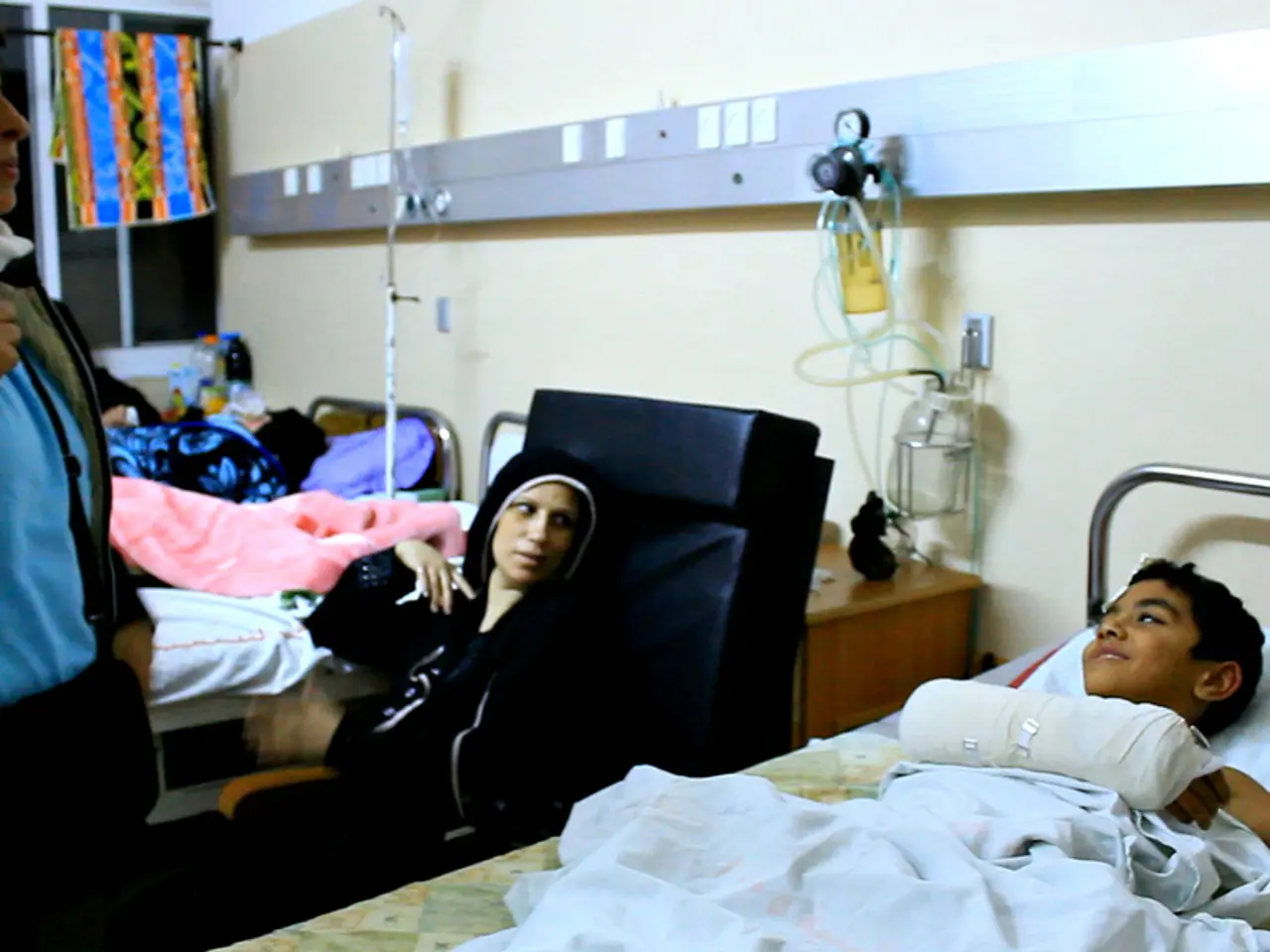Catastrophic Food Crisis Forecasted in Gaza, according to WHO
In the embattled Gaza Strip, a deadly hunger crisis is unfolding, with over 100,000 women and children in urgent need of medical treatment due to severe acute malnutrition, according to the World Health Organization (WHO).
The situation is dire, with hospitals struggling to cope with the influx of malnourished patients. Medical staff report that about 15% of children tested are suffering from moderate to severe malnutrition. Tragically, more than a dozen people have died from hunger in just 24 hours in recent times.
Civilians trying to access food aid are often met with violence and chaos, making aid delivery extremely hazardous. Witnesses report incidents of aid packages being seized or misappropriated, and there are allegations that some individuals have been shot at while attempting to collect food supplies.
International aid organisations, including the World Food Programme (WFP) and the Office for the Coordination of Humanitarian Affairs (OCHA), are working tirelessly to alleviate this crisis. However, they face significant operational challenges. The supply quantities are "far too small", and delivery efforts are hampered by security issues on the ground.
Hospitals supported by NGOs such as MedGlobal have opened specialized departments to treat malnourished children, but access and capacity remain insufficient to meet the demand. Furthermore, humanitarian staff themselves are suffering from hunger and exhaustion due to the collapsing lifelines and extreme conditions in Gaza.
The blockade, continued hostilities, and restricted border crossings have created a critical humanitarian situation. The evidence gathered by organisations such as Amnesty International suggests that the restrictions contribute to a deliberate strategy of starvation, amounting to potential war crimes or genocide.
Thousands in Tel Aviv have taken to the streets to protest against the ongoing conflict, displaying photos of children from Gaza who have died from hunger-related causes. Despite Israel's denial of a "famine" in the Gaza Strip, it acknowledges the existence of hunger. Many residents of Gaza say they live on only one meal a day.
Over 1,600 trucks with UN aid were approved from mid-May to mid-July, but only about 30 trucks per day are being distributed, according to the UN. The Israeli government spokesman accuses Hamas of preventing the distribution of aid to the population and seizing aid trucks. However, the UN denies not picking up trucks that are already in the Gaza Strip and bringing them to the people.
As the crisis deepens, over 1,600 trucks with aid entered the Gaza Strip between July 19 and 22, according to an Israeli government spokesman. Yet, the question remains whether this aid will reach those who desperately need it, or if it will continue to be caught up in the chaos and violence that plague the region.
- Despite the ongoing hunger crisis, international aid organizations like the World Food Programme and the Office for the Coordination of Humanitarian Affairs are working diligently to alleviate the situation in Gaza, though they face operational challenges due to supply constraints and security issues.
- Chronic diseases and medical conditions are becoming increasingly common among malnourished children in Gaza, and specialized departments in hospitals supported by NGOs like MedGlobal have been established to treat them, but access and capacity remain insufficient to meet the rising demand.
- In response to the crisis, there have been protests in Tel Aviv against the ongoing conflict, with people displaying photos of children from Gaza who died from hunger-related causes. The Israeli government acknowledges the existence of hunger in Gaza, but denies it amounts to a famine.
- Evidence gathered by organizations such as Amnesty International suggests that restrictions on the movement of goods and people in Gaza may constitute a deliberate strategy of starvation, potentially amounting to war crimes or genocide.
- The political and military situation in Gaza has contributed to a critical humanitarian situation, exacerbated by migration and warfare, making it increasingly difficult to ensure proper nutrition, health and wellness, and fitness and exercise for the region's residents, particularly women and children.




